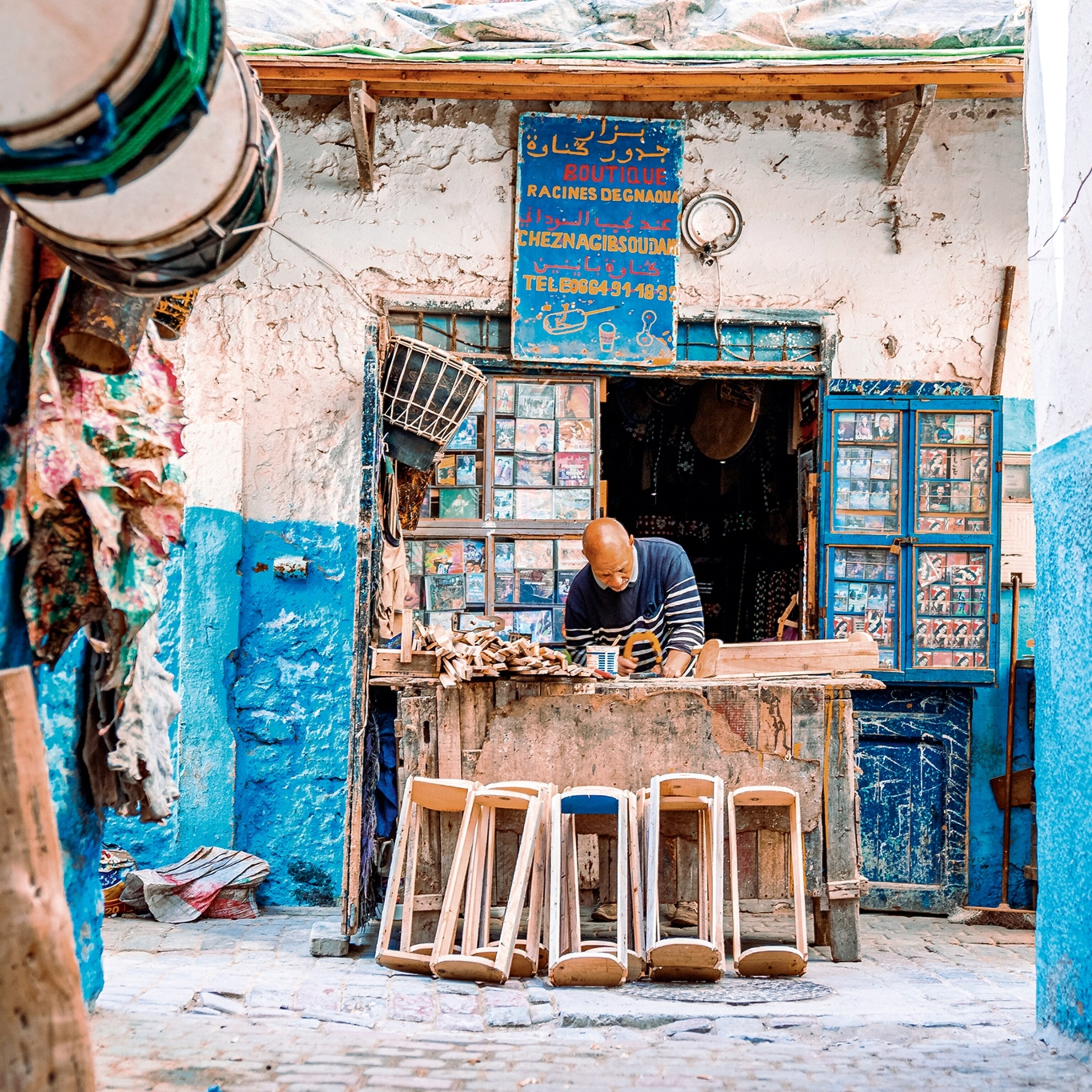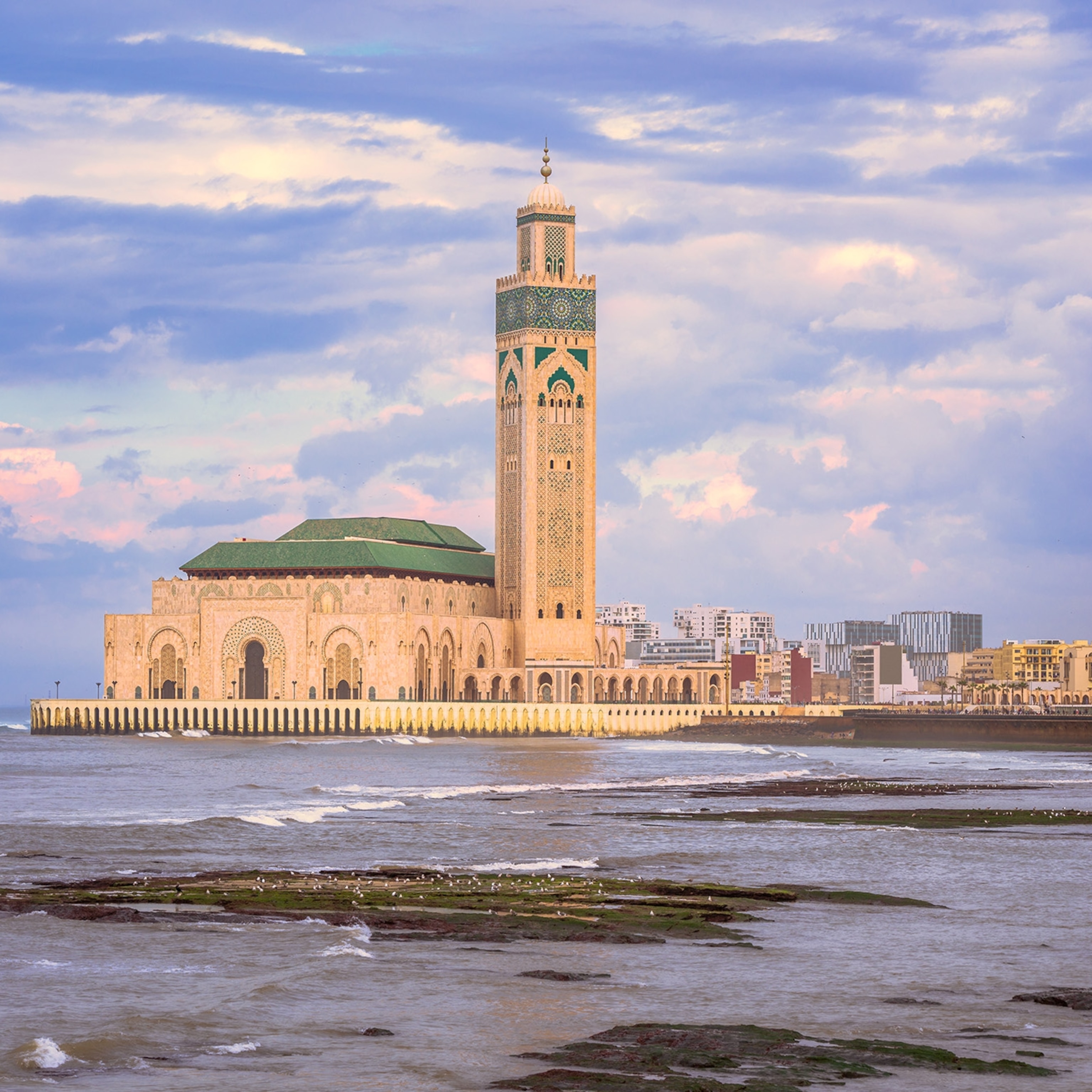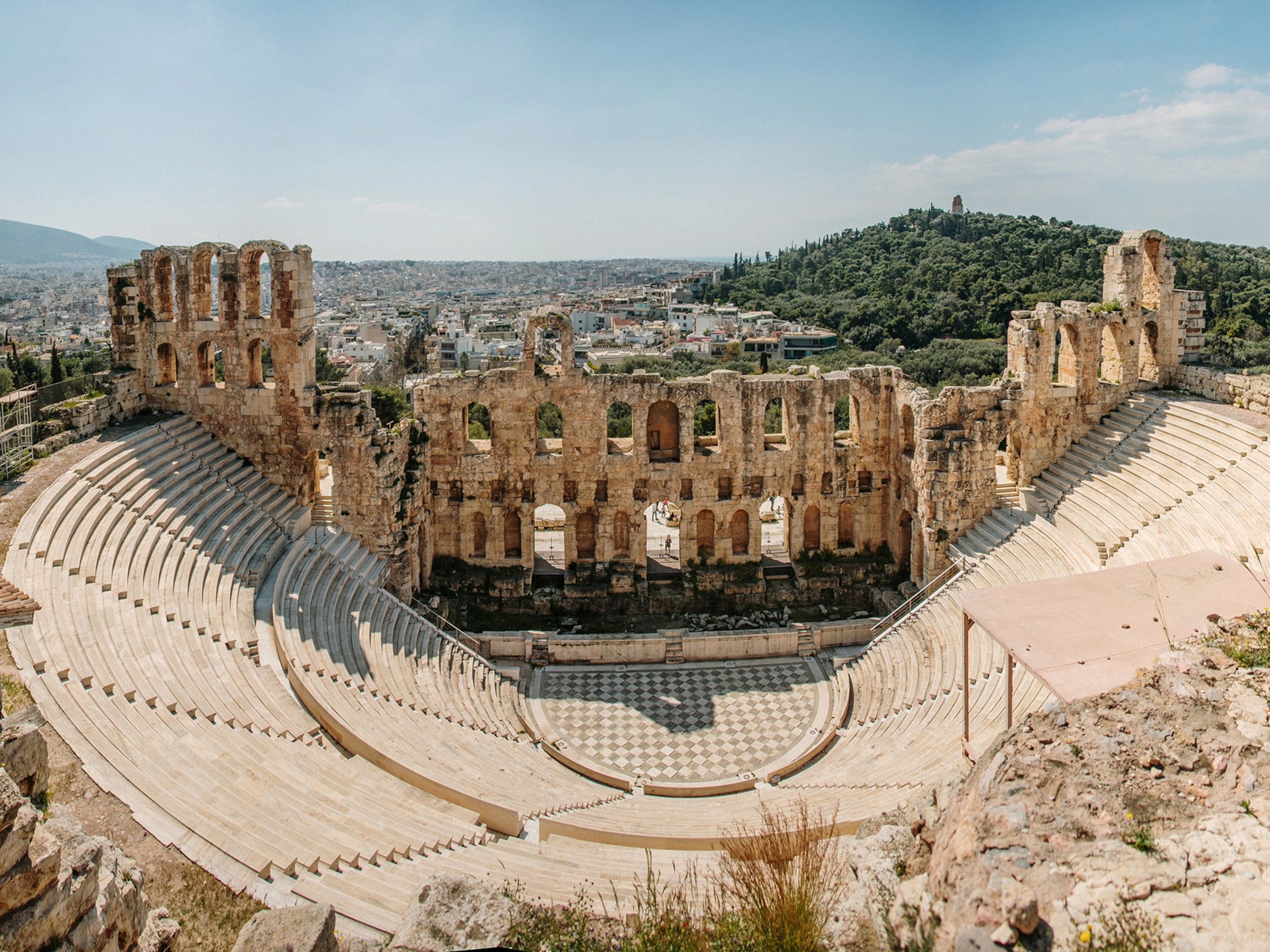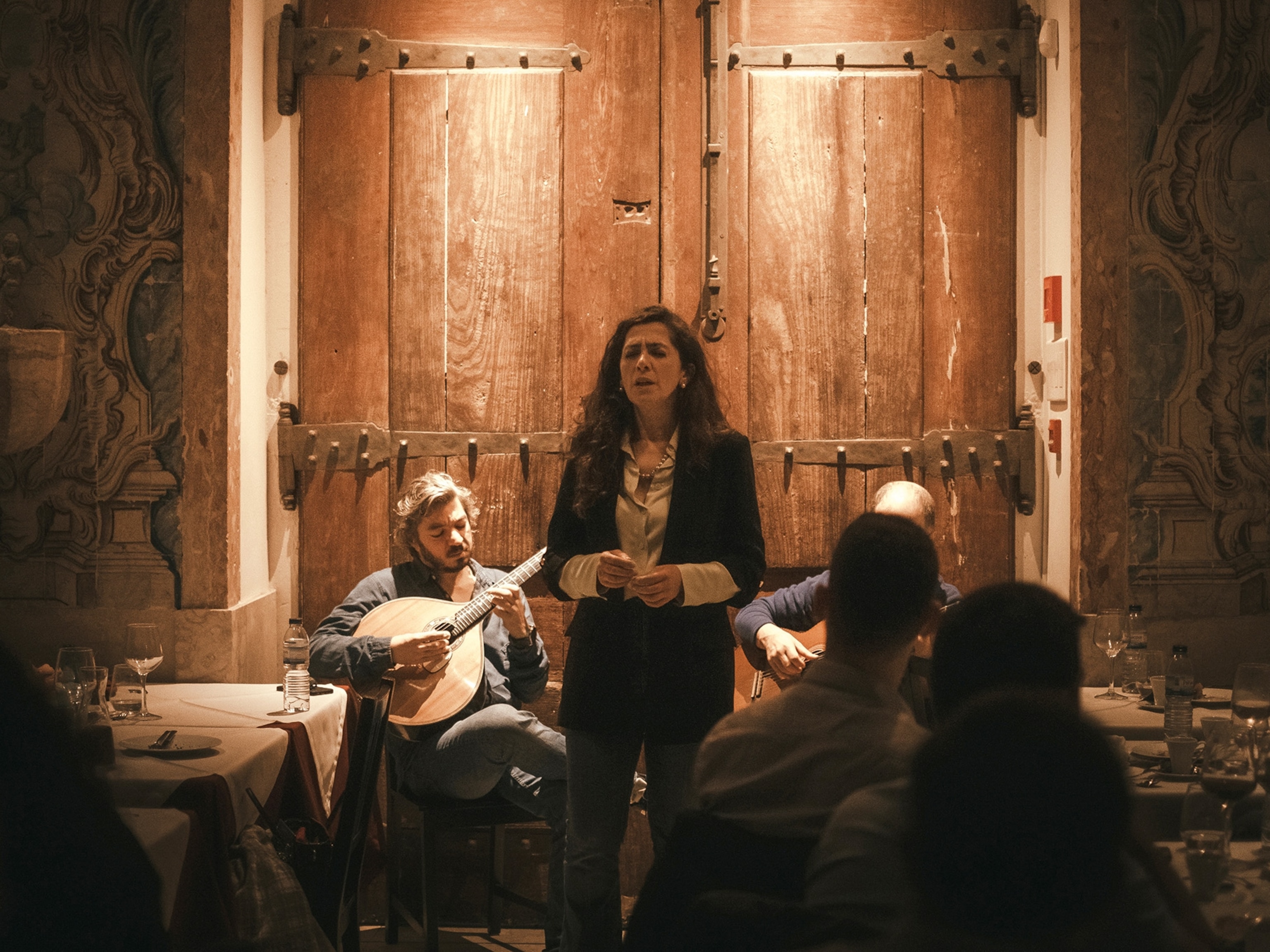How a new generation is reviving hikayat, Morocco’s ancient storytelling tradition
As modernity threatens to mute the fabled storytellers of Marrakech, a wave of young Moroccans are keeping their nation’s candle burning in a new festival honouring a 1,000-year-old tradition.
The souks of Marrakech have a reputation for chaos. But today, as a distant drumming rumbles around the medina’s red stone walls, everyone around me stops what they’re doing and an uncharacteristic hush falls. Oil-smeared metalworkers drop their tools to the ground with a clatter. The tearing of saws grinds to a halt, sparks settling in the dust. Even the haggling salesmen lose their bewildered targets, as all eyes are fixed on a single passageway from where the sound is coming. It gets louder and closer. It’s the sound of a parade, and it’s headed this way.
Before me, flashes of gold, red and green swirl into view. Three, then 10 gnawa musicians appear from the passage, their robes billowing as they stride and leap their way towards me banging tbel drums and crashing krakeb cymbals. Behind them, women clap their hands and sing in spine-tingling ululations that seem to ricochet from every pot, pan and babouche slipper in Souk Semmarine. I spot the parade’s organiser, Zouhair, a young Marrakshi storyteller, and I’m happily swept into the crowd as it heads towards Jemaa el-Fnaa, the parade’s final stop.
The parade’s purpose today is to carve out performance space in the city’s legendary square, so that a motley crew of marching hakawati (storytellers) can take to the stage for the grand opening of the city’s first International Storytelling Festival. Recognising Morocco's 1,000-year-strong heritage of hikayat (oral storytelling), the festival’s aim is to illuminate the art, to raise awareness of its precarious place in modern Moroccan culture, and to encourage younger generations to participate.
Zouhair Khaznaoui is one such young storyteller who’s keeping the flame alive. “Bismillah al-rahman al-rahim,” he projects melodically to the crowd. Dressed in traditional clothing and standing tall in the centre of the cleared space, he launches the event, delighting his wide-eyed audience with his tale of a selfish sultan, cruel queen and plucky peasant. The audience is hooked.
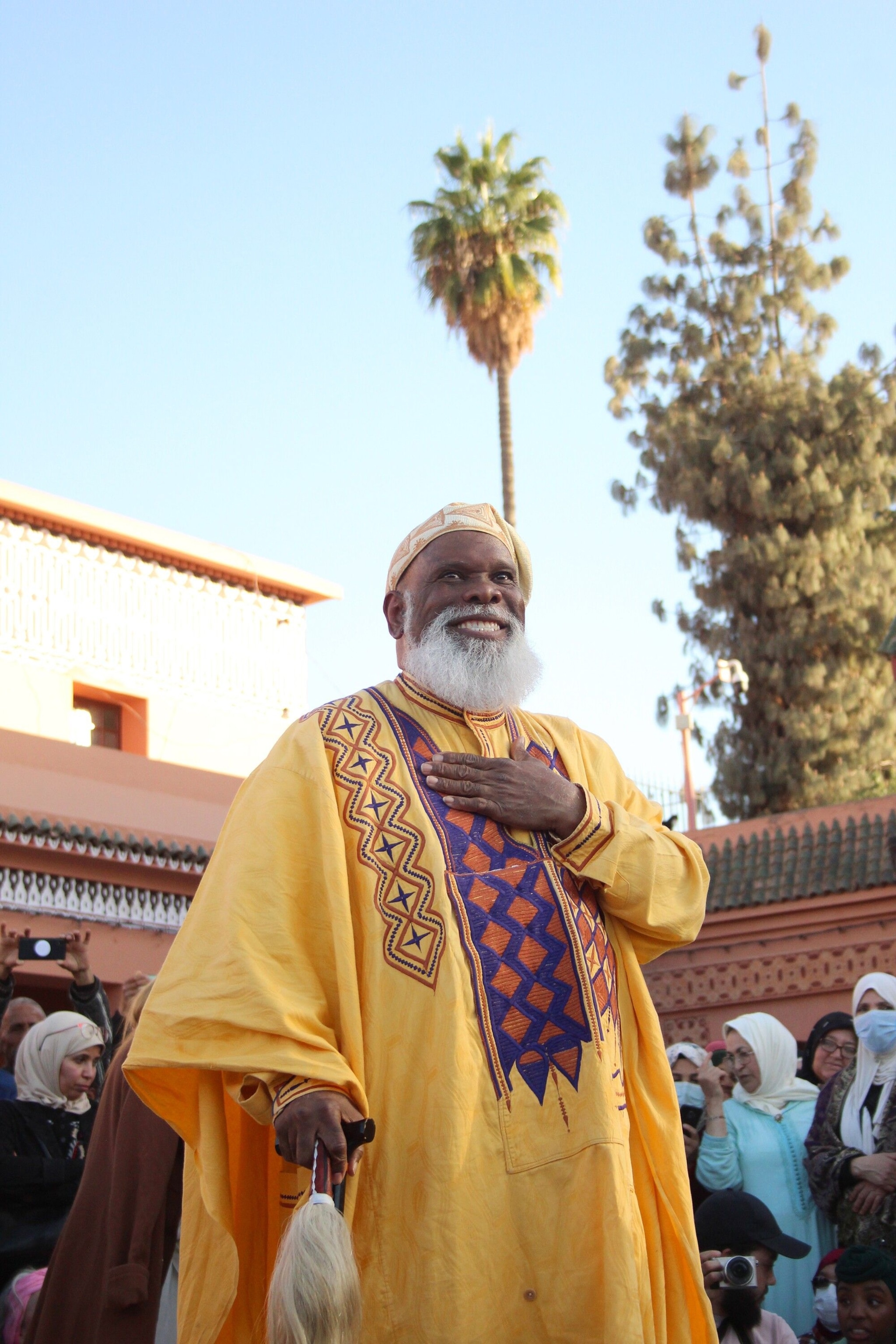
Telling his story in Darija — Moroccan Arabic — he finishes with a theatric translation in English for the scattered number of non-Moroccan listeners. He’s followed by one teller after another, each delivering a lively performance in their native language. Whether spoken in Amazigh, English, Wolof, Finnish, classical Arabic or French, the tales of love, loss, beauty and pain are spoken with zeal and feel deeply familiar, whatever the language.
“It’s all about the show,” Zouhair remarks as we watch. “And for hundreds and hundreds of years, performance has been the very essence of Jemaa el-Fnaa.”
Its name might translate to ‘meeting place of the dead’, but it’s anything but lifeless. For centuries Jemaa el-Fnaa has been hallowed ground for storytellers, herbalists, merchants, cooks and snake charmers, who’ve all competed for the attention of travellers. First were the merchants arriving by camel caravan, having crossed the Sahara Desert from all over East Africa and the Middle East to trade in Marrakech (the city’s countless funduk buildings — accommodation for the merchants — stand as a fascinating testament to this history). Now, hundreds of years later, tourists arriving by plane are the more usual game.
“Over the years, the square has changed,” says Zouhair. “As taxes were raised for space on the square, the commercial properties flourished as their income was more secure, and space became more limited for entertainers. Now, grouped together in a more confined space, the entertainers need to be bigger and louder to compete for their crowd, and so they bring speakers and electronics to draw attention to themselves. This has drowned out the voice of the storyteller.”
Amid the ruckus of whistling snake charmers, bellowing merchants, hollering herbalists and food stalls blasting pop music, it’s increasingly difficult to zero in on the hakawati, as they perform just 30ft away. As they rely only on their own voice boxes, it’s easy to see how their profession has nearly been muted.
“Up until about a decade ago, storytellers would number between 10 and 20 in the square at any one time,” says Zouhair. “Now, you’d be lucky to find three.” But, in recent times, a more reliable stage has emerged: Morocco’s cafes, riads, museums and community centres now offer space to travelling tellers. The World Storytelling Cafe, which opened in February 2022, is one such destination — a vegan cafe-cum-performance venue with a regular roster of storytelling.
The cafe first emerged as a virtual meeting place during the Covid-19 pandemic, and later materialised in a physical location, thanks to the vision of Morocco-based British hoteliers, Mike Wood and Lucie Andersen-Wood. There’s no official charge for watching the storytellers at the cafe, but a hat is passed around the room for donations, according to Moroccan tradition. Performing here at any one time could be anyone from Abderrahim Al-Azzalia, a respected master and veteran of storytelling, to Mariam Cannan, a young woman who represents a wave of tellers-in-training at the nearby Al-Muniya storytelling school.
“The festival is exactly what Marrakech needs,” says Zouhair. “As well as celebrating our history, we’re bringing our culture into venues around the city, so we’re giving life back to the tradition as well as bringing people into the city’s beautiful riads and museums.”
And, as I hear the palm tree-shaking tones of Baba-C — the festival lineup’s most rambunctious character — ring out across the square, I feel hopeful that the storytellers will make sure their voices are heard, one way or another.
Three more cultural and community activities
1. Take a cookery course
Master your couscous and tagine techniques at the Amal Women’s Training Center, a nonprofit organisation situated a little way out of the medina. The organisation employs and trains disadvantaged women in Marrakech and helps them to hone their culinary skills ready for work in restaurants and cookery schools.
2. Spend time in the baths
Dotted around the medina are public hammams (bathhouses), used for centuries by city dwellers in need of R&R. Pick up some eucalyptus-enriched black soap, rhassoul clay and a kessa glove from the souk and dive in. Or for a more luxurious experience, try the royal hammam at La Sultana Hotel.
3. Learn the basics of Darija and Amazigh
In the new part of the city, the Henna Café is a women-led community enterprise that hosts affordable daily language classes for locals and travellers alike in English, Darija and Amazigh. The cafe also offers a workspace to travelling henna artists from all over North Africa and has a regular roster of storytellers.
Marrakech’s International Storytelling Festival next takes place in February 2023. Visit the World Storytelling Café website for further information, plus regular live streams of storytellers.
Follow us on social media
Facebook | Twitter | Instagram
